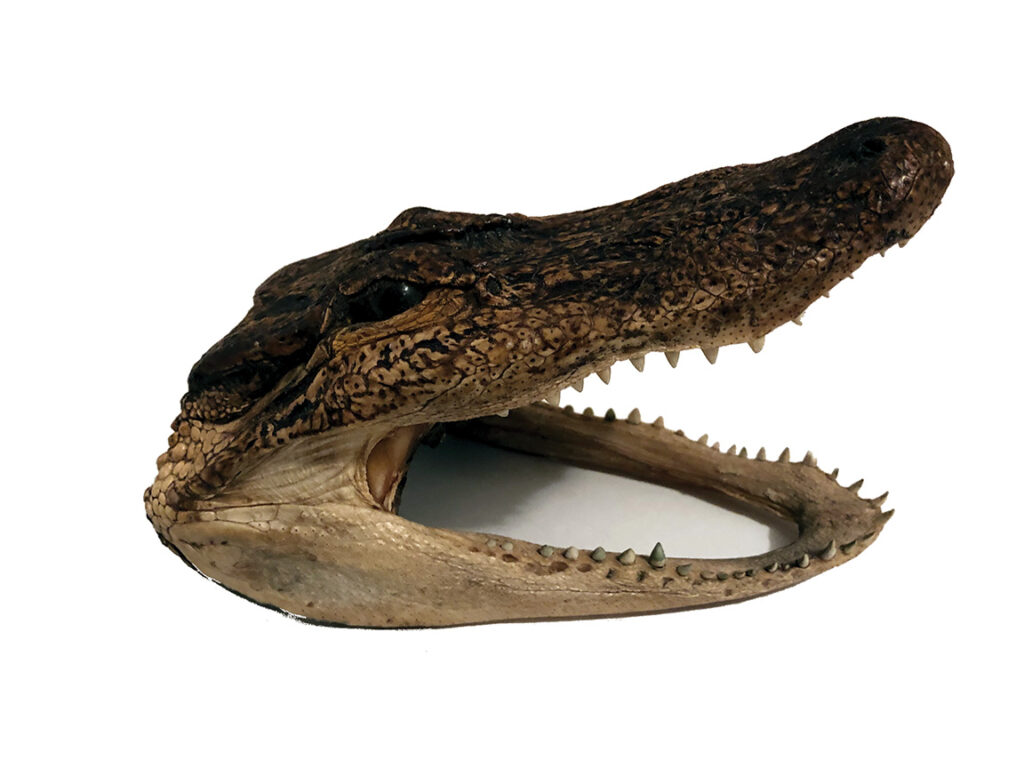
Dorri Partain
Contributor
See you later, alligator – because your taxidermied head and other body parts make great souvenirs.
Dating to the period when the Seminole tribes were the original occupants of Florida, the alligator has long been used as a source for meat and hides, with the teeth, claws, and bones used for necklaces and other decorations.
Often confused with the crocodile, which also lives in the fresh waters of the Florida Everglades, the American alligator (alligator mississippiensis) is the state reptile for Florida, Loiusiana, and Mississippi. Considered endangered from 1973 to 1987, the species has made a comeback, due in part to alligator farms that provide meat and hides, reducing the impact on the wild population.
Permits are required for seasonal hunting of wild alligators on public lands. In addition to Florida, permits for gator hunting are offered in Louisiana, Texas, Alabama, North Carolina, South Carolina, Mississippi, Georgia, and Arkansas. While each state sets different times and limits, each year Florida offers 7,000 Statewide Alligator Hunt Permits, with a two gator limit from August 15 through November 1. Florida residents pay $252 for a permit, while non-residents pay $1,022 for their chance; animals must be dispatched and may not be transported alive.
In the wild, male alligators can reach the length of 15 feet and weigh up to 900 pounds. The females are diminutive in comparison, reaching 9.5 feet in length and 200 pounds. Clutches of 20 to 70 eggs are laid in June, with eggs hatching in September. The hatchlings are around 8 inches in length, with distinctive yellow bands. While they are able to fend for themselves, they are usually protected by their mother for up to two years.
Alligator heads are available in different sizes, with smaller heads taken from farm-raised reptiles. Whether farm-raised or from the wild, all gator heads are made in the USA.


















